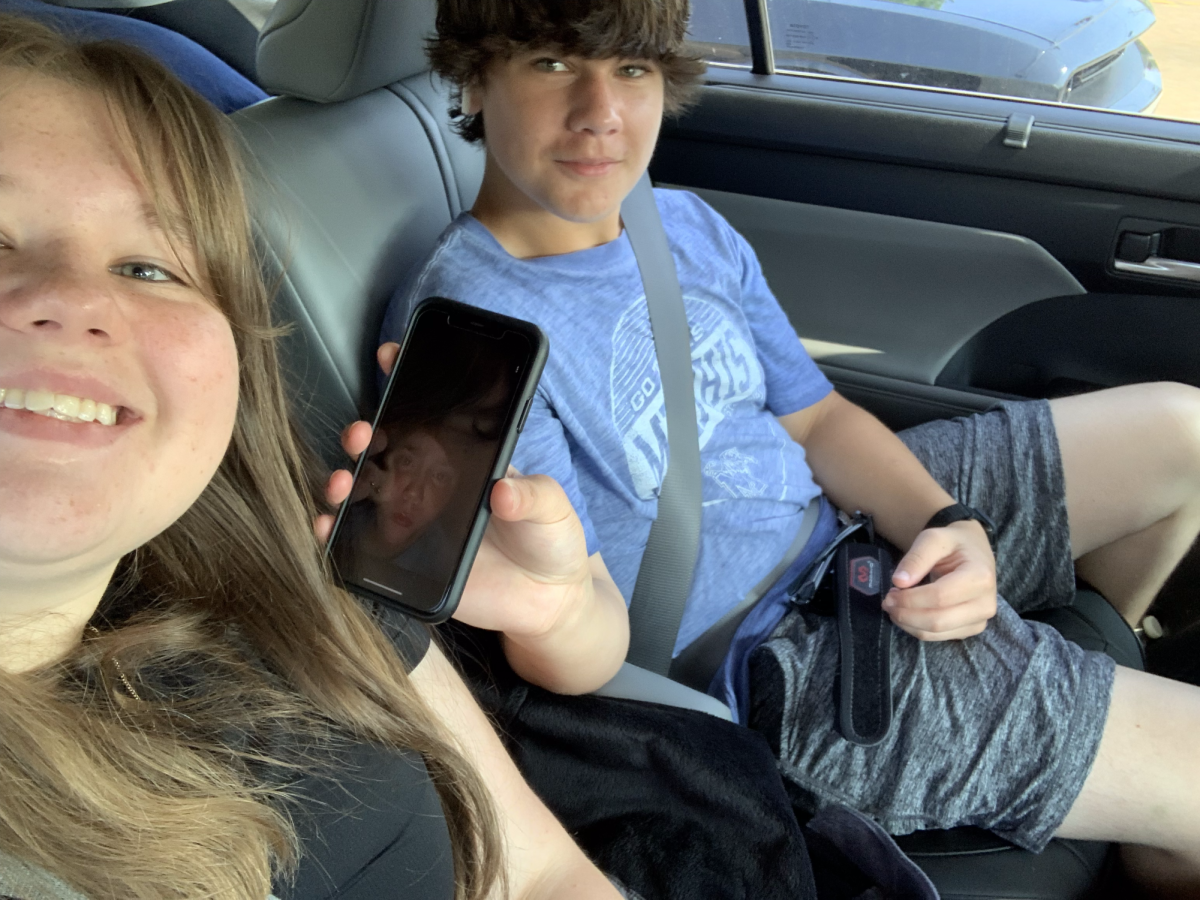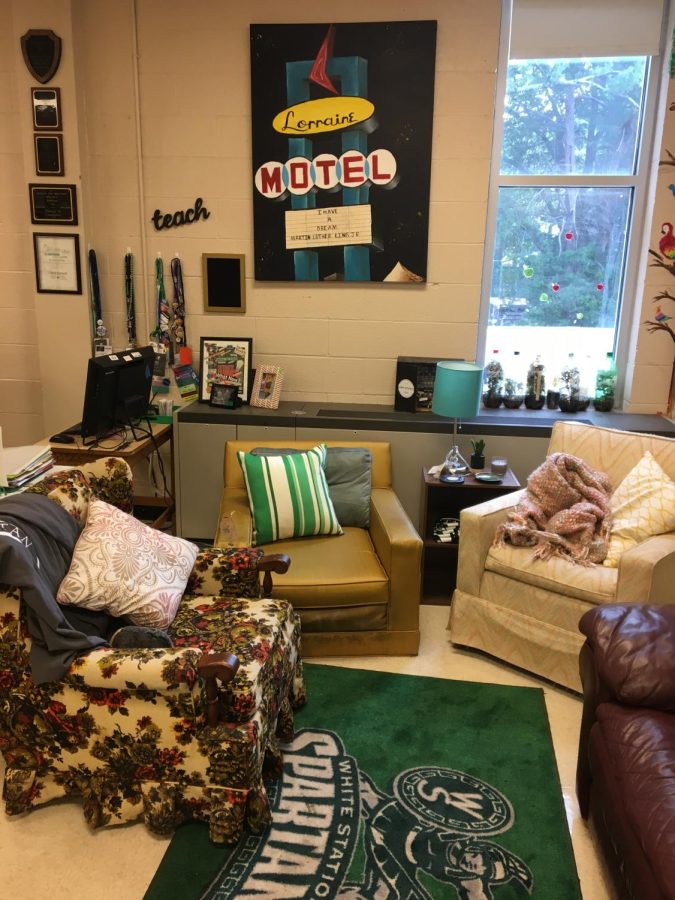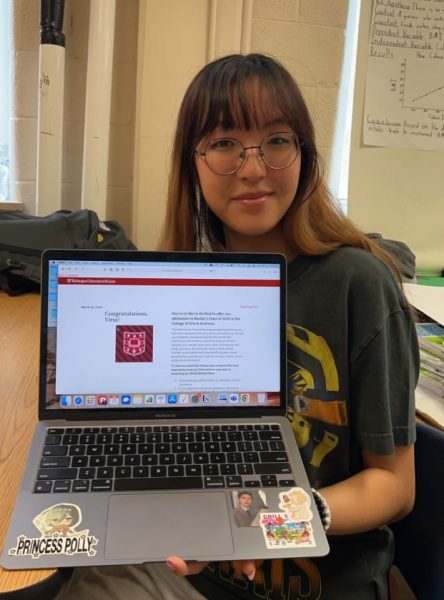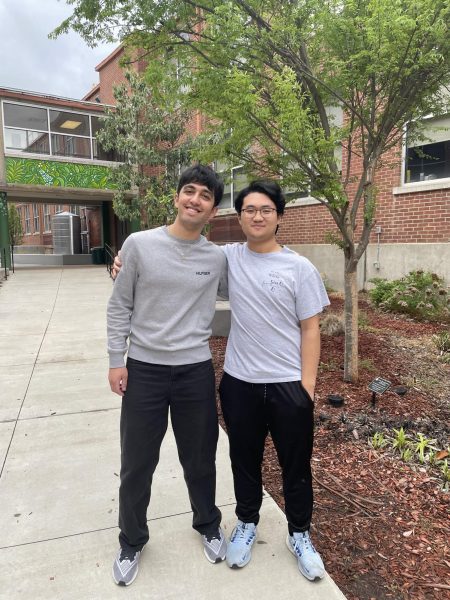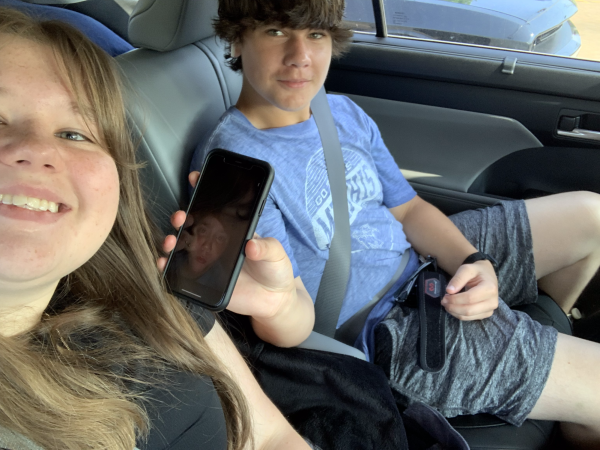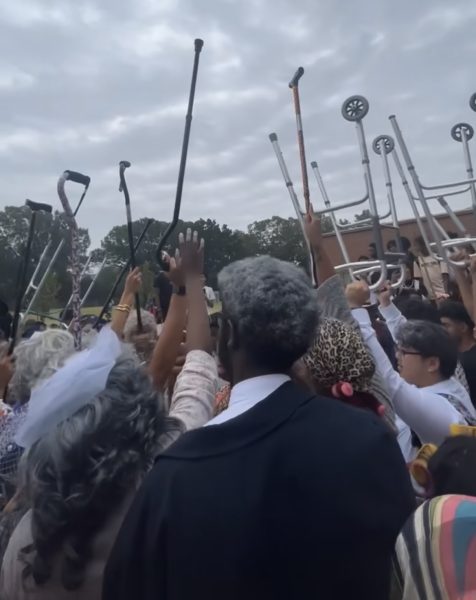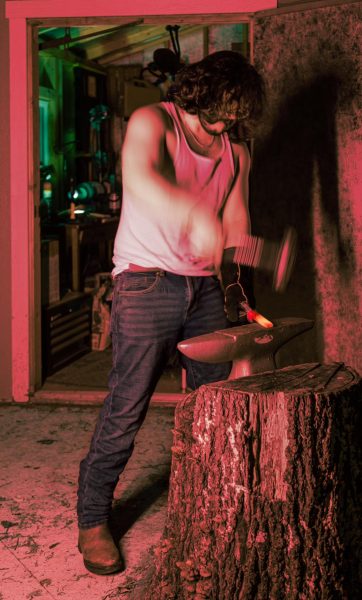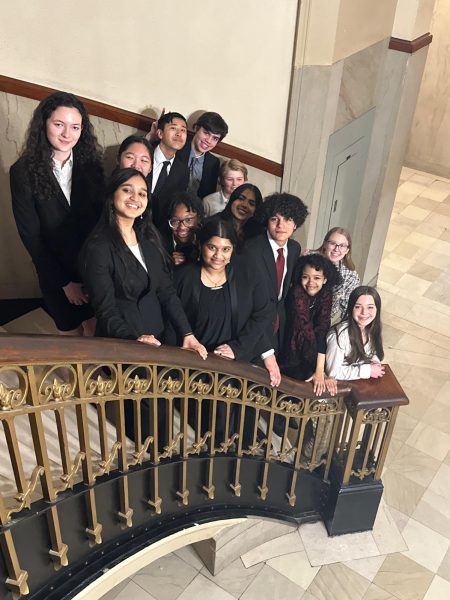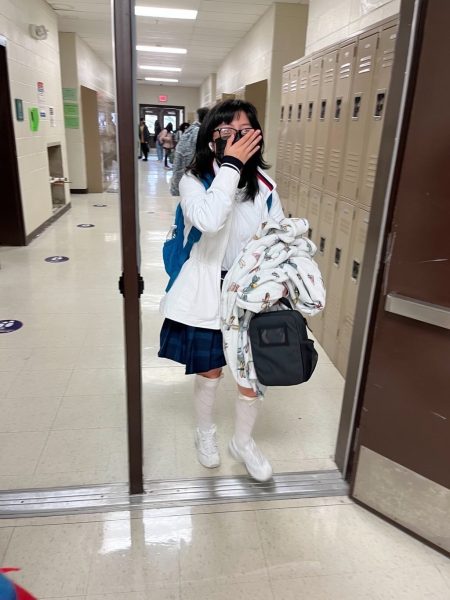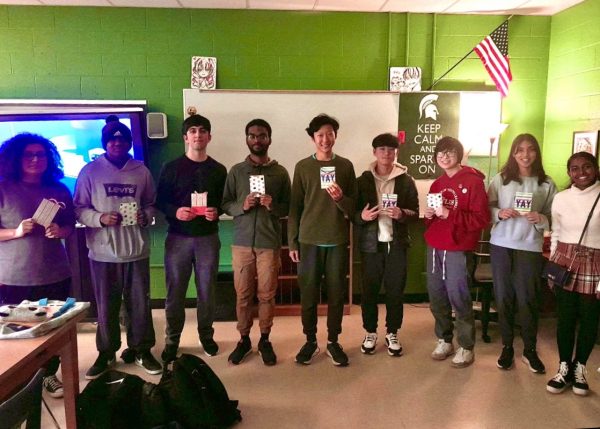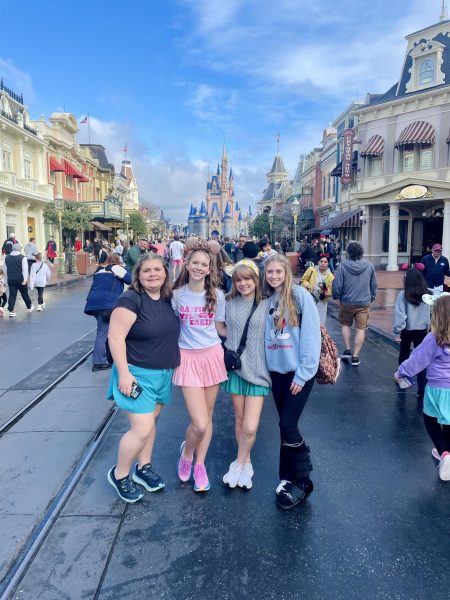A soft place to land: safe spaces at school
In 2016, when science teacher Rachel Kannady saw an oversized brown leather chair on the side of the road, she posted about it on Facebook and soon after, a friend brought it to her classroom. Kannady thought it would be the perfect way to create different seating options for her students — something her mom, a teacher for 25 years, did in her classroom. By 2019, Kannady obtained three more chairs creating a mini living room inside her classroom.
The chairs serve as a place to sit for students that want a second option rather than sitting at one of Kannady’s long tables. But, the class living room is also a place for students to cry, sleep and to feel safe.
“I’ve seen children sit on that chair and just cry,” Tamia Elliott (11) said. “Like cry from college acceptance letters … The reality of it is, Mrs. Kannady’s room doesn’t look like a lot of classrooms. … Kids go in there just because. … They sit down and them sitting down there and crying is very important, because imagine if [the chair] weren’t there — and there wasn’t a place [for them to cry] — how much kids wouldn’t be able to let out.”
Elliott, one of Kannady’s students, saw a post from Kannady on Instagram about the anniversary of the chair and made a post of her own to share her thoughts about the chair and what it means to her and many other students.
“Making that post, I wanted to be relatable to kids who are exhausted by school in whatever way and [show] that … a small thing would matter the most for a … teenager if they just had somebody to talk to or just had a place to relax on because not every kid has that privilege once they leave school,” Elliott said.
With the pressures of life and school, many students need a place where they can feel accepted for who they are and be able to let out emotions — a safe space. Although what makes a place safe varies on the person, nearness is a necessity for all students.
“Without accessibility, you’re automatically excluding a huge group of people from your spaces,” Austin Kennedy (12) said. “Once you establish accessibility, I think creating and maintaining a safe space becomes almost a byproduct.”
The need for safe spaces can come from stressors ranging from failing tests and arguments with parents to bullying and loneliness. Students can show signs that something is bothering them and a teacher catching these signs can create a safe space in itself.
“Being attentive to another person is not something you can teach,” Kannady said. “If a student comes in late and the immediate response is “‘bout time you showed up,’ that means that person missed the slumped shoulders, down gaze and bags under the kid’s eyes.”
While most of the school day is dedicated to preparing for life after high school, some students cannot glean all of the educational benefits if they do not feel safe in a classroom.
“You’re not just a robot,” Elliott said. “Yes you’re learning material, … but you also are learning how to be a better human being … To feel safe in a teacher’s classroom, whether or not you may have a really close relationship with the teacher, it makes you engage more, it makes you wanna learn more, it makes the days easier, it makes you look forward to going to a class.
Although students can sometimes be faced with casual ageism, it is hard to argue that today’s students have a different set of problems than previous generations.
“A year of quarantine, online school and transforming the school has made life harder,” Kannady said. “The emotional burden has made high school so much harder for students than it was for us 20 years ago.”
Safe spaces can be found in a classroom one enjoys or a quiet place like the library. But, safe spaces are not necessarily places. Having a teacher that listens or a group of friends at the outdoor picnic tables can create a sense of safety for some students.
“A place where you’re 100% free to express yourself authentically is one of the most valuable things a person can have,” Kennedy said.
Kannady’s living room has helped make her classroom a place she loves and one that she believes her students also love.
“When people sit in the chair, … it’s very soft, and a lot of the time when you sit on [it] you can kind of put the heaviness on the chair whether it’s literally from your body or metaphorically,” Elliott said.
Your donation will support the student journalists of White Station High School. Your contribution will allow us to purchase equipment and cover our annual website hosting costs.



